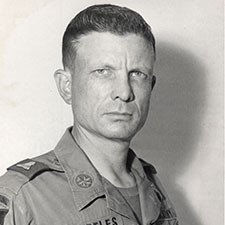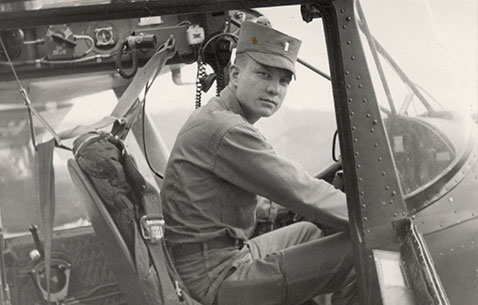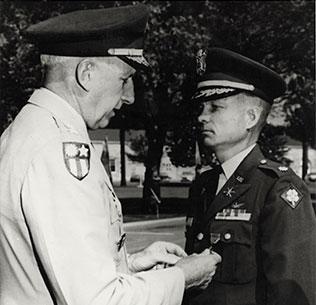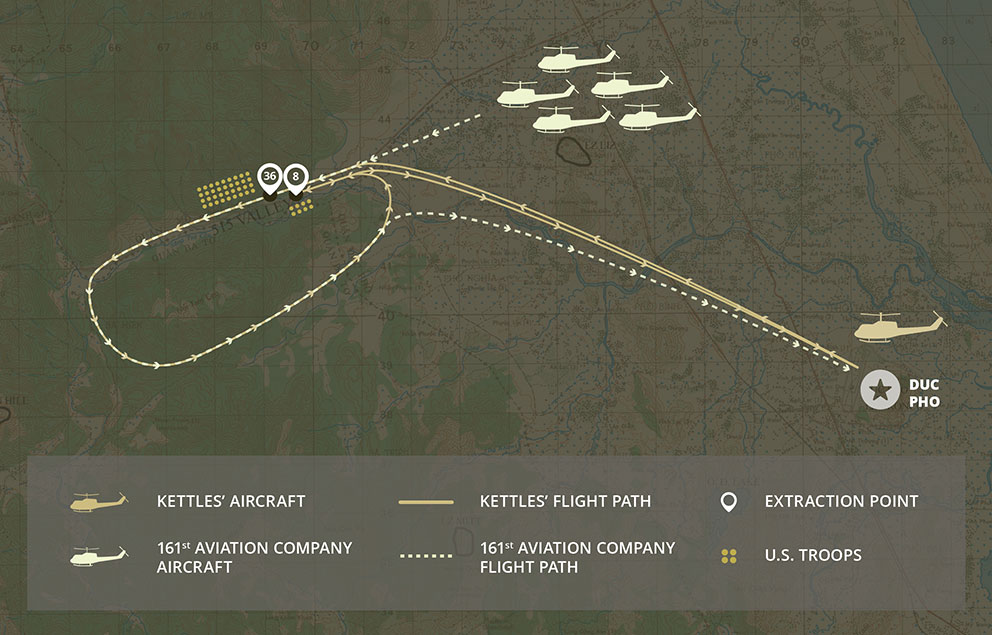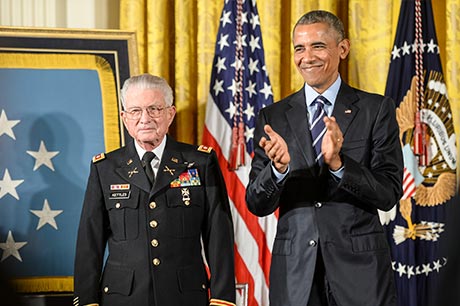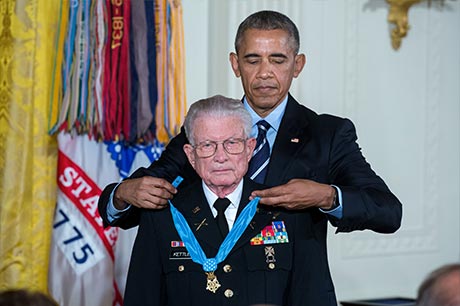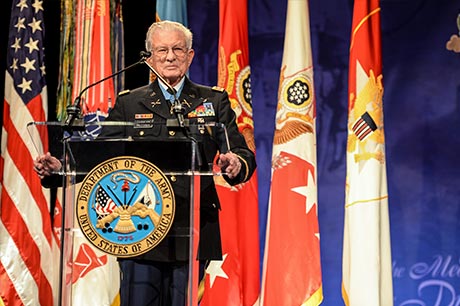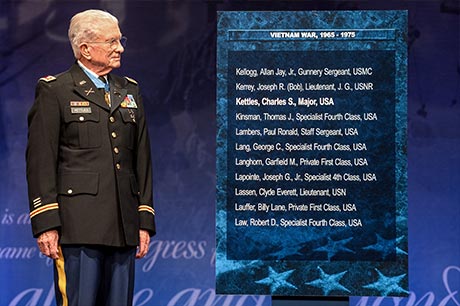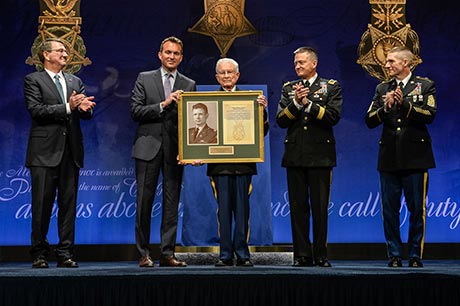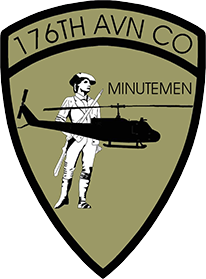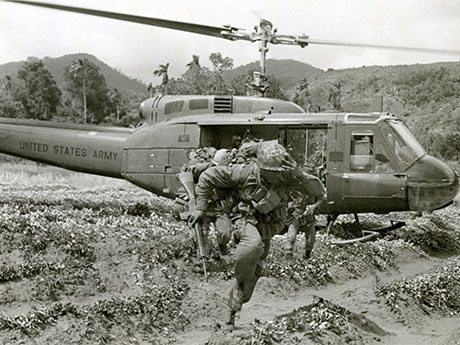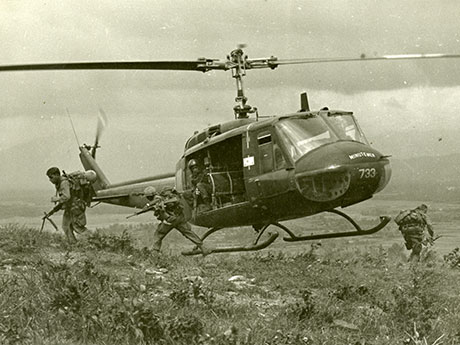He answered the call to serve again in 1963, when the United States was engaged in the Vietnam War and needed pilots. Fixed-wing-qualified, Kettles volunteered for Active Duty. He attended Helicopter Transition Training at Fort Wolters, Texas in 1964. During a tour in France the following year, Kettles was cross-trained to fly the famed UH-1D “Huey.”
Kettles reported to Fort Benning, Georgia, in 1966 to join a new helicopter unit. He was assigned as a flight commander with the 176th Assault Helicopter Company, 14th Combat Aviation Battalion, and deployed to Vietnam from February through November 1967. His second tour of duty in Vietnam lasted from October 1969, through October 1970.
U.S. Army Lt. Charles Kettles at the controls of an Army L-19 aircraft, 1954. (Photo
courtesy of Retired U.S. Army Lt. Col. Charles Kettles)
Lt. Gen. L. J. Lincoln awards the Distinguished Service Cross to U.S. Army Maj. Charles
Kettles, Ft. Sam Houston, San Antonio, 1968. (Photo courtesy of Retired U.S. Army
Lt. Col. Charles Kettles)
In 1970, Kettles went to Fort Sam Houston in San Antonio, Texas, where he served as an aviation team chief and readiness coordinator supporting the Army Reserve. He remained in San Antonio until his retirement from the Army in 1978.
Kettles completed his bachelor’s degree at Our Lady of the Lake University, San Antonio, Texas, and earned his master’s degree at Eastern Michigan University, College of Technology, in commercial construction. He went on to develop the Aviation Management Program at the College of Technology and taught both disciplines. He later worked for Chrysler Pentastar Aviation until his retirement in 1993. Kettles currently resides in Ypsilanti, Michigan, with his wife Ann.
Kettles’ awards and decorations include the Distinguished Service Cross, the Legion of Merit, the Distinguished Flying Cross, the Bronze Star Medal with one bronze oak leaf cluster, Air Medal with Numeral “27”, the Army Commendation Medal with one bronze oak leaf cluster, the National Defense Service Medal with one bronze service star, the Korean Service Medal, the Vietnam Service Medal with one silver service star and one bronze service star, the Korea Defense Service Medal, the Armed Forces Reserve Medal with bronze hourglass device, the Master Aviator Badge, Marksman Badge with carbine bar, the Valorous Unit Citation, the Republic of Vietnam Gallantry Cross with bronze star, the United Nations Service Medal, the Republic of Vietnam Campaign Medal with “60” Device, and the Republic of Vietnam Gallantry Cross Unit Citation with palm device.

